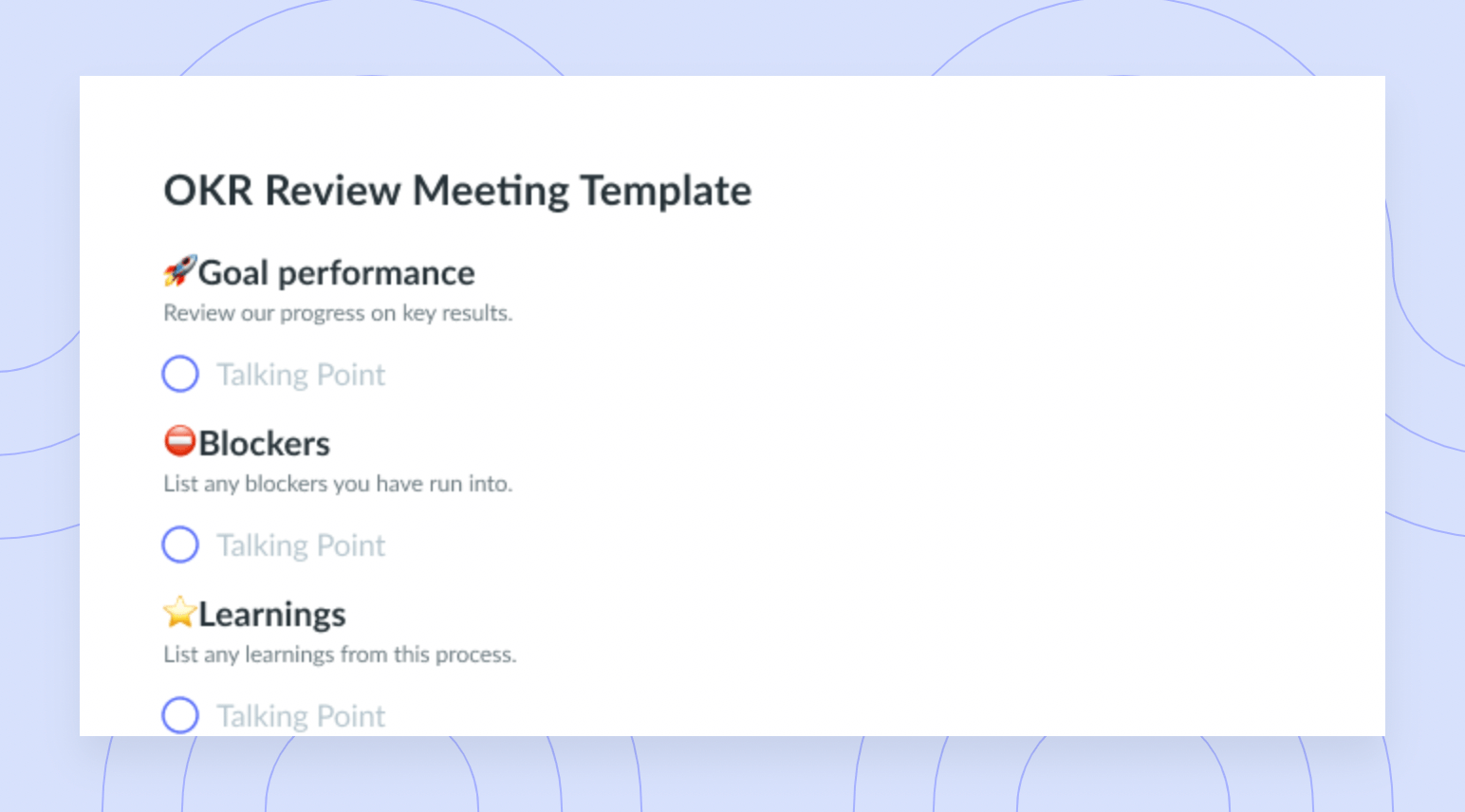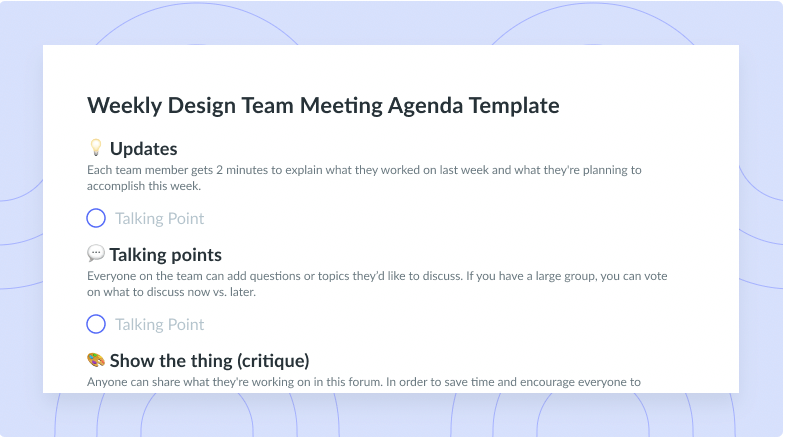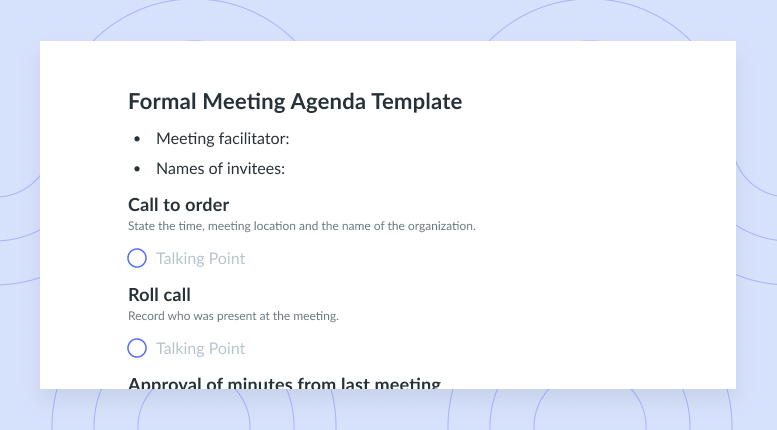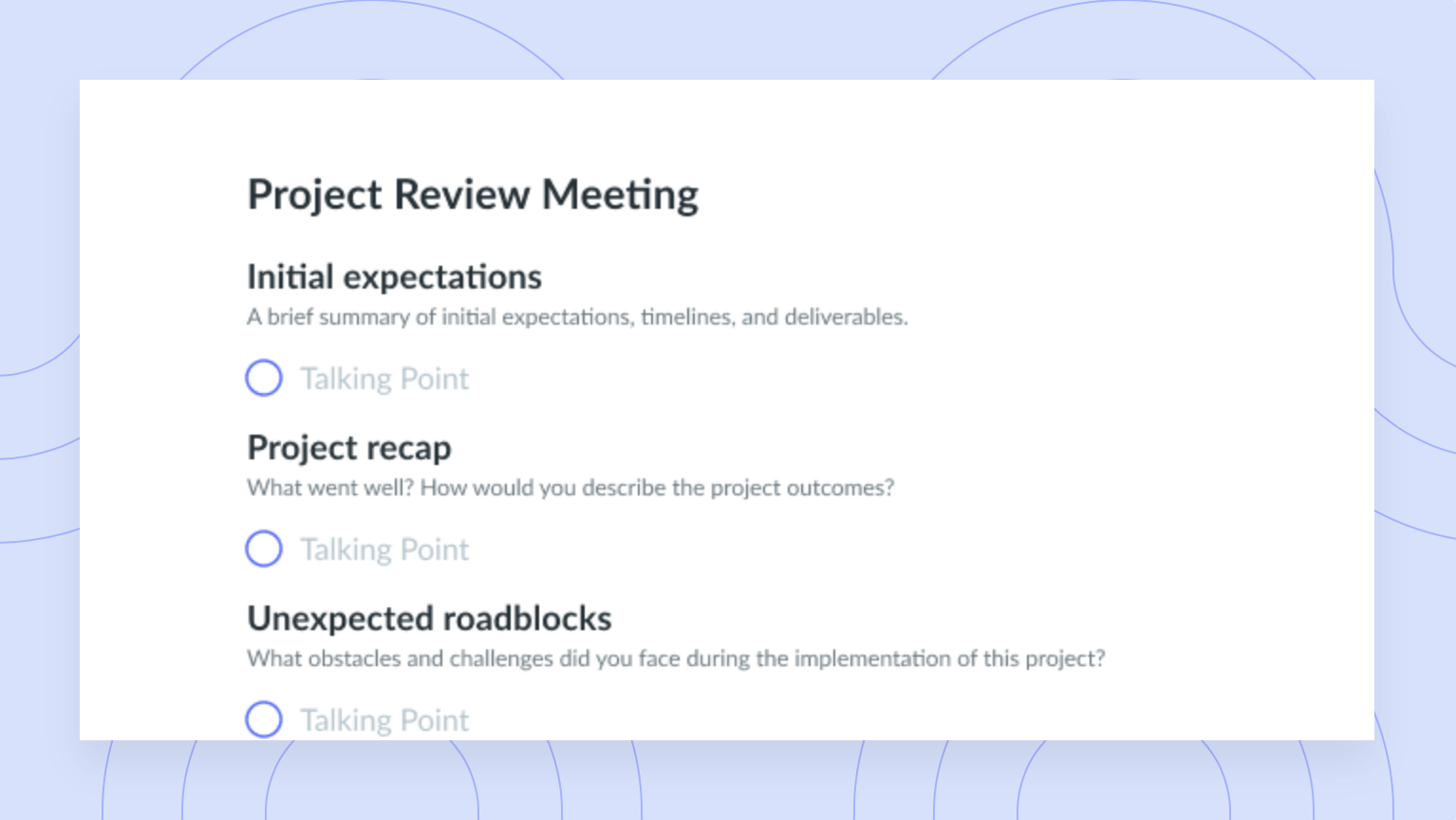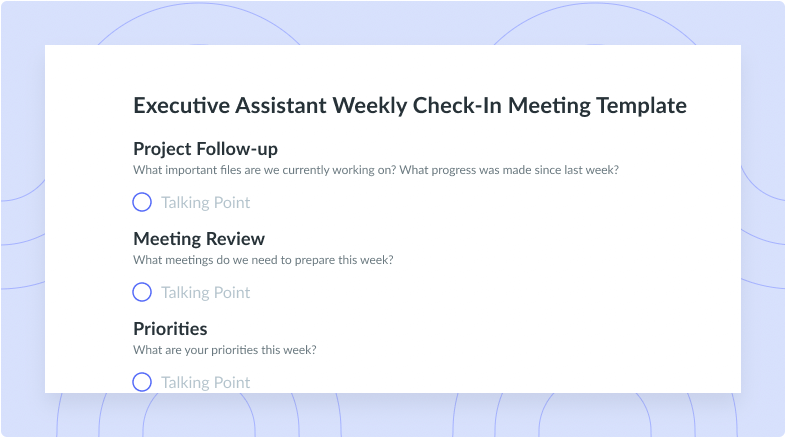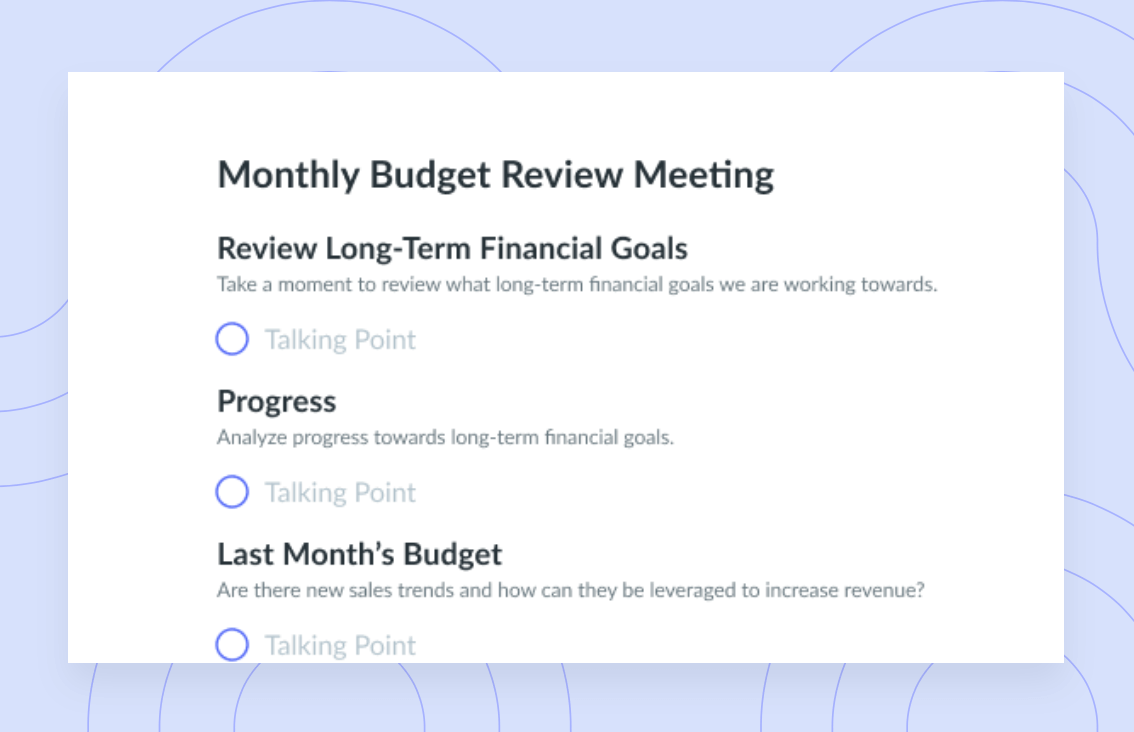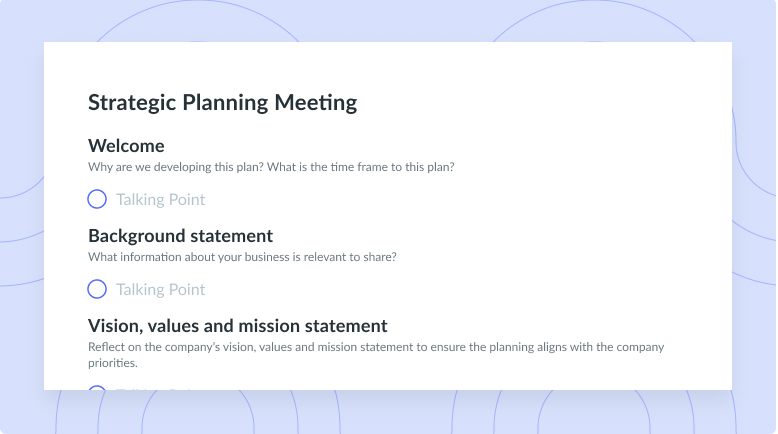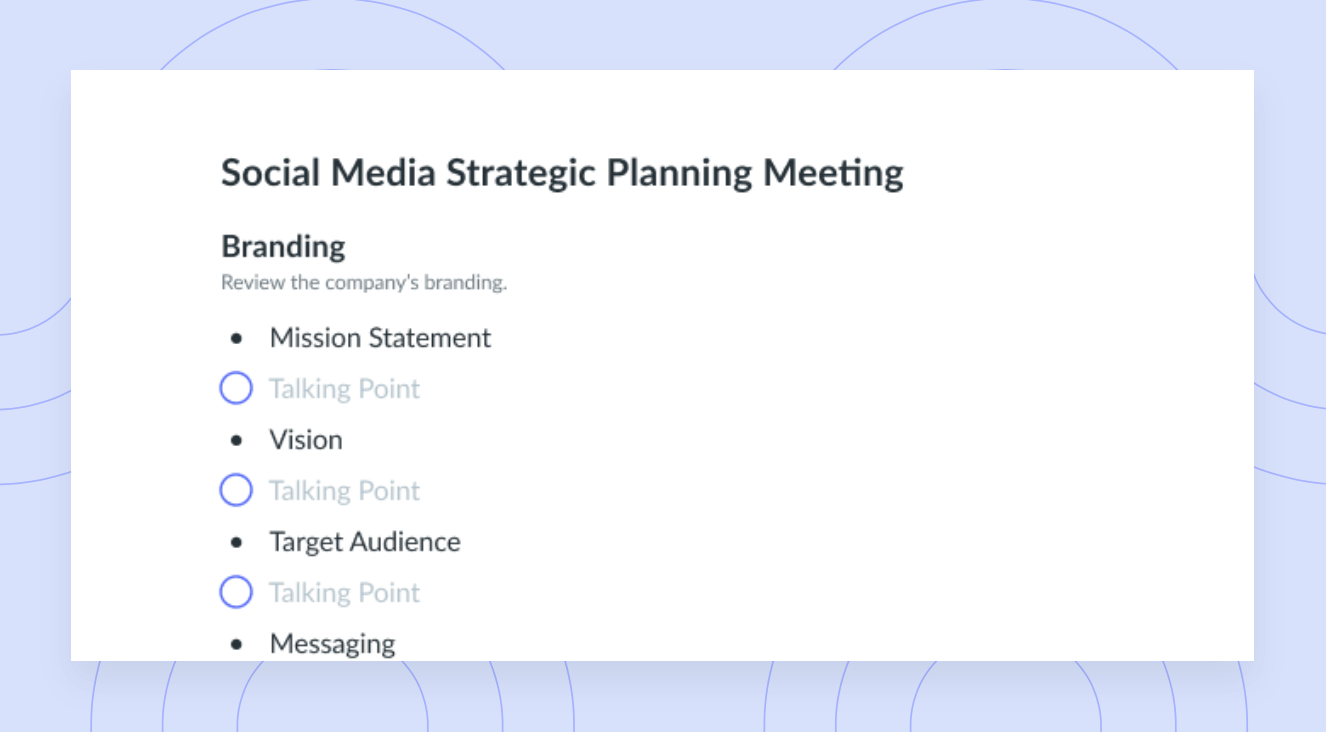Meeting Attendance Tracking: Tips for Productive Meetings
Learn why you should track attendance in your meetings and our best tips for attendance tracking to help you run productive meetings!
It’s no secret that big teams can struggle to stay on top of tracking small details. With so many people and projects to oversee, sometimes we lose sight of what’s happening. One area that you can easily shed some more light on is attendance in your meetings! Knowing who is attending each call and for how long can give you great insights into how valuable, interesting, and necessary your meetings are. And this information might even make you aware of areas for improvement in your meetings, too!
Why meeting attendance tracking is important
Attendance tracking for meetings is useful for companies with big teams that need to participate in meetings with lots of attendees (like an all-hands or town hall meeting), or even for agencies and sales teams that are holding client meetings that have a lot of stakeholders involved. There are plenty of reasons a company might need to track attendance for a meeting. Some of these reasons include:
- Measuring employee engagement and performance. Both unmotivated and overscheduled employees are more likely to miss meetings.
- Identifying which stakeholders need a more detailed recap of the call if they weren’t able to attend.
- Proving attendance for certification of completion (if it’s for a training course).
- Assessing departmental representation in town halls or project status meetings.
- Tracking buyer roles and involvement in the sales selling process.

Run efficient meetings, come to a decision, and get back to work
Level up your meeting habits to boost engagement and productivity with a collaborative meeting agenda. Try a tool like Fellow!

Benefits of meeting attendance tracking for productive meetings
- Understand how interesting and necessary your meetings are. If participants are leaving halfway through the call, you may need to work on virtual engagement strategies.
- Quantify improvements in meetings. Tracking attendance rates and time spent in each call gives you quantifiable data to benchmark success for future meeting improvement activities.
- Maintain records in case of a dispute. In the unfortunate case that you need to discuss low performance with an employee, you can rely on meeting attendance tracking as evidence.
- Prove attendance for certifications or qualifications. Some things—like earning promotions or getting a training certificate—require you to prove that you attended the full meeting session.
Best practices for meeting attendance tracking
1Pre-meeting planning
Ahead of your meeting, you’ll want to have a system in place for efficiently tracking your meeting attendance. If you’re hosting your meeting virtually, consider if the videoconferencing platform you’re using has built-in tools to support your tracking. You’ll also want to decide on your meeting’s ground rules, which will help to keep the call flowing smoothly.
- Create an attendance list and send it out to participants
Building an attendance list and sharing it with all expected participants ahead of the call helps remind them that they are needed at the meeting. It’s best to send this list as early as possible to block the time in attendees’ calendars, but you should also send it again 24 hours before the call as a reminder.
- Set clear attendance and punctuality expectations
Part of proper meeting etiquette is showing up to the meeting on time. In your reminder to attendees a day before the meeting, make punctuality clear. If you’re hosting your meeting virtually, you might consider asking people to test their microphones and webcams in advance to ensure they can join the call on time. For in-person meetings, remind attendees to consider traffic or weather conditions when planning their commute.
2During the meeting
It’s one thing to get attendees to show up on time, but it’s another battle to get them to stay engaged in the meeting. When hosting virtual meetings with large groups, there’s always a potential risk that attendees will try to drop off quietly, so you’ll want to practice a few tricks to catch this. Regardless of where you host your meeting, you’ll also want to think of some virtual engagement strategies to keep the energy of the meeting alive!
- Mark attendance during the meeting
Attendees might guess that you’ll take attendance when they arrive. To avoid drop-outs during the call, consider taking polls during the meeting. This is a sly way to mark attendance at multiple points during the meeting, and it also tests to see if your group is paying attention!
- Handle latecomers and early leavers respectfully
There are some occasions where participants truly do need to arrive late or leave early. To minimize disruptions to the meeting, consider having a 2-3 minute waiting period at the start of the meeting to wait for others to join. In this time, make a message about where to find action items after the meeting for anyone who needs to leave early. Be sure to post this information in the meeting notes so latecomers can see it, too.
- Foster active participation
Keep the energy of your meeting high so attendees are less likely to drop off or fall asleep. Try one of these collaborative brainstorming techniques or try using a meeting engagement tool to inspire new ways of getting your team involved in discussions.
3Post-meeting follow-up
To wrap up your meeting, send a short post-meeting follow-up email to your attendees. Keep this message short and sweet with a few highlights from the meeting, a summary of action items assigned to each person, and the date of the next meeting.
- Share the attendance data with participants
Participants may be interested to know how many people showed up, how long your call went, or how many decisions you were able to clear in a call! This data is especially helpful for managers who need to track performance goals.
- Update attendance records and make note of absences
Keep a record of who attends meetings regularly so it’s easy to spot trends in absenteeism or go back later to reference if someone was present or not. Meeting hosts can use these records to see if new meeting activities are improving attendance and engagement rates compared to the historical data.
- Follow up with absent attendees
Absent attendees should still be kept in the loop on the meeting conversation. Consider sharing a meeting recap with them that has a bit more detail on the discussion—including talking points, blockers, unique insights, and an explanation of the action plan. If you have a recording of the meeting or meeting notes, these are also great to share!
Automated attendance tracking
Automated attendance tracking tools help to save time for meeting hosts. There’s a lot of functionality in automated meeting management tools, such as reminder notifications to attendees, collaborative meeting agenda building, and distribution of post-meeting feedback surveys to participants.
1How to use attendance tracking software
Every automated attendance tracking software is a bit unique, but generally, there are a few things to do to get started:
- Integrate it directly into your videoconferencing platform and calendar management system. By doing so, you’ll allow the software to be easily accessible on any call and it can tie attendance records to specific meetings.
- Invite your attendees as you normally would. The attendance tracking software will work in the background to track invites.
- Find out how to view and mark attendance. How this works is specific to the tool you’ve chosen to use. For example, in Fellow, you’ll see a list of attendees at the top corner of the call.
- Build attendance reports. Automated systems will be able to email you a list of attendees for your records after the call. Some systems might also allow you to export a .csv or PDF of the list.
2How to use Fellow for attendance tracking
Fellow is a tool that can automate many areas of your meeting management process—including attendance tracking! With Fellow’s multi-assignee for action items feature, you can now assign an action item to be ‘complete by all’ to ensure that everyone in your meeting completes the same action item; for example, for larger meetings, requiring each participant to select that they are in attendance.
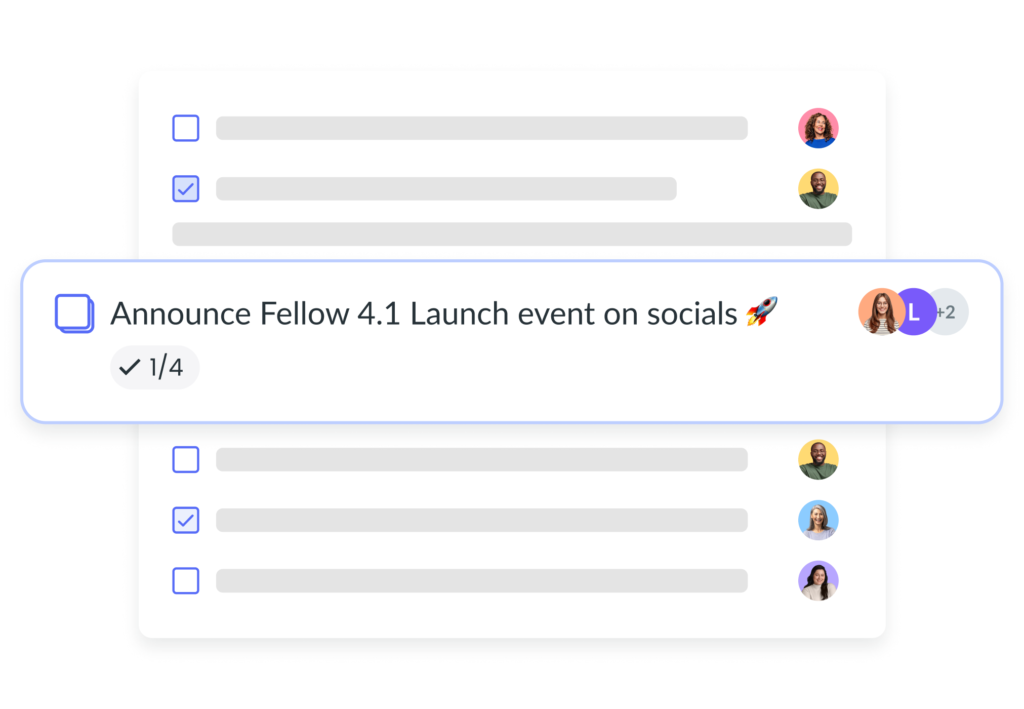
Fellow also allows you to see all of the active attendees right within your meeting agenda, so all attendees can contribute to the conversation and follow along during the meeting. Additionally, Fellow times how long your meetings are to help you stay on track—this is great for tracking the return on investment (ROI) of your meetings!

Parting advice
As your organization scales, meeting attendance tracking will be essential for ensuring efficient and productive meetings. Ahead of each meeting, make sure to prepare well with an attendee list and ground rules. On the day of, keep participants actively engaged to avoid early drop-offs. Then, follow up after each meeting with recap notes to help absent team members feel included and informed (and to give yourself a chance to collect feedback from those who did attend). There are plenty of ways to track meeting attendance—whether you opt for a manual or automated approach, consider the needs of the meeting, the time you have available to record attendance, and the usefulness of the data for proving meeting success in the future.

![7 Meetings Every CEO Should Lead [+ Free Templates]](https://fellow.app/wp-content/uploads/2022/08/Meetings-Every-CEO-Should-Lead-2.jpg)

![12 Tips to Hold Productive Partner Meetings [+ Free Template]](https://fellow.app/wp-content/uploads/2022/05/Productive-Partner-Meetings-2.jpg)





